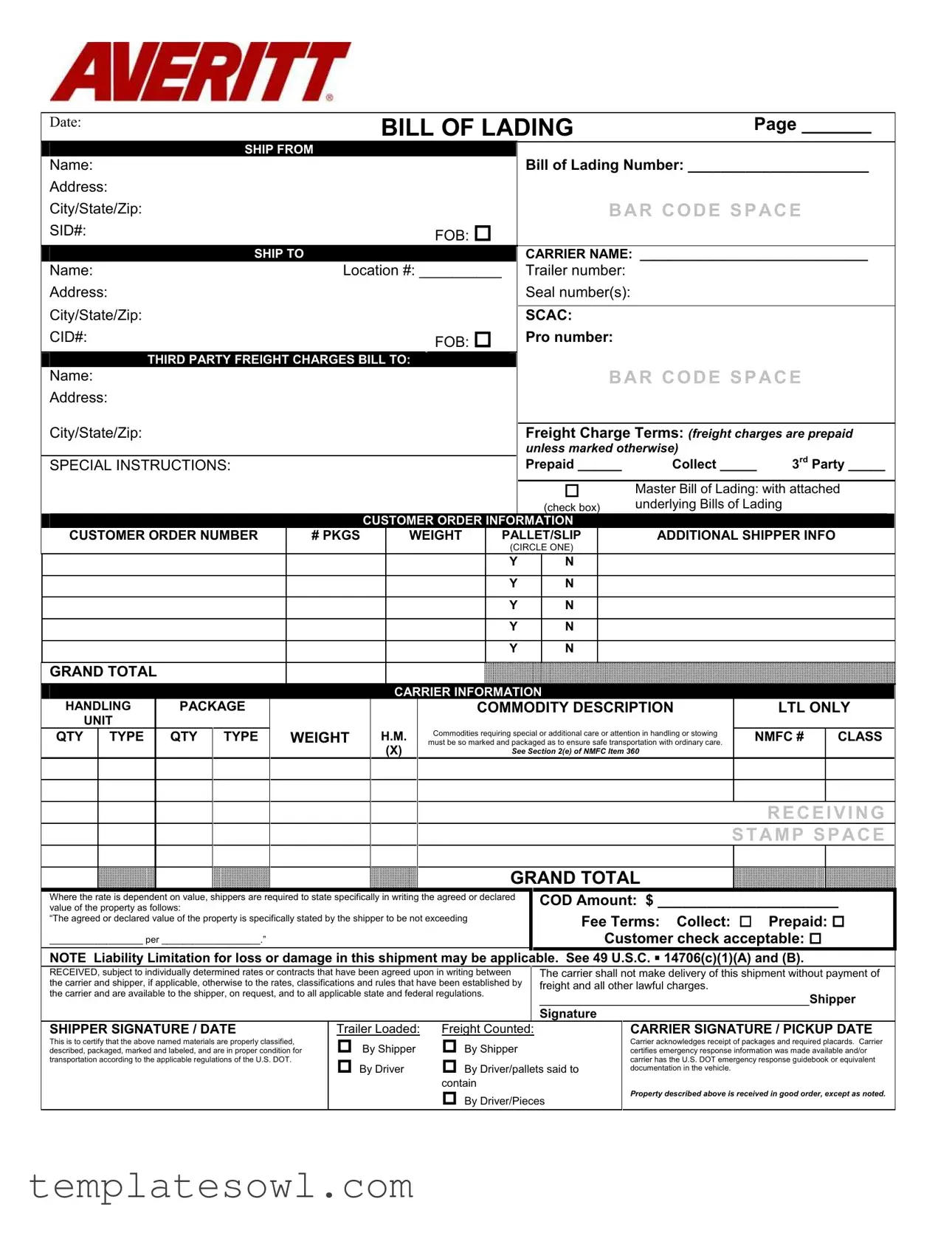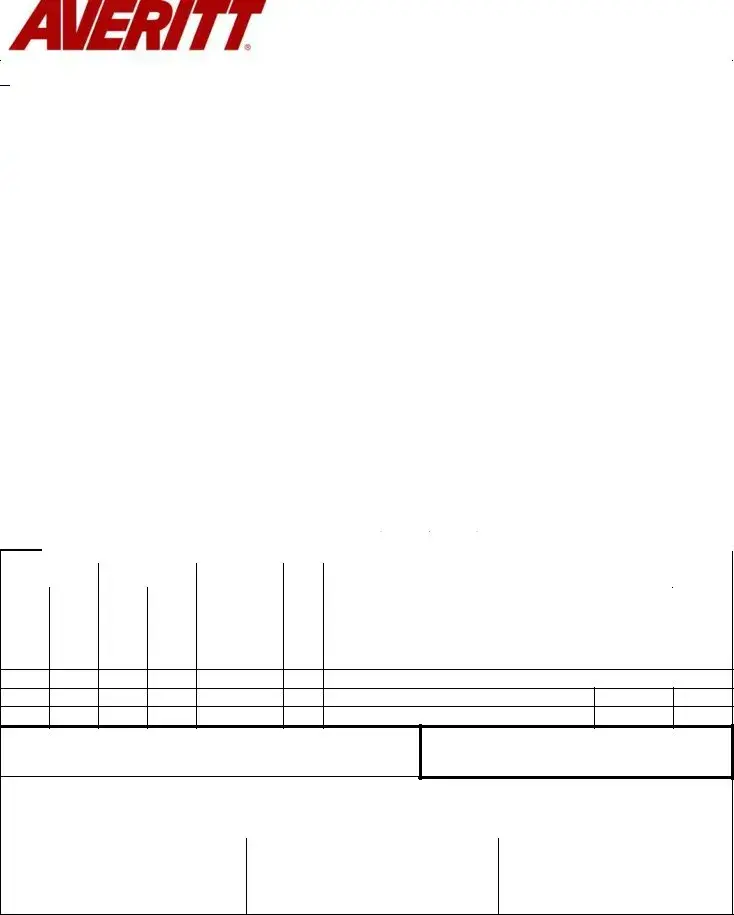What is the purpose of the Bill of Lading Averitt form?
The Bill of Lading Averitt form serves as a legal document that details the shipment of goods from one location to another. It acts as a contract between the shipper and the carrier, outlining the responsibilities and rights of both parties. This form provides essential information such as the shipper and receiver's addresses, shipment details, and any special instructions regarding the transportation of the goods.
What information is required to complete the Bill of Lading Averitt form?
To fully and accurately complete the Bill of Lading Averitt form, several pieces of information are required. You need to provide the names and addresses of both the shipper and the recipient, including city, state, and zip code. Additional details such as the Bill of Lading number, weight, packaging type, and any special handling requirements must also be included. If applicable, details about third-party freight charges and the agreed or declared value of the shipment should be noted as well.
How should special instructions be noted on the Bill of Lading Averitt form?
Special instructions can be provided in the designated area of the Bill of Lading Averitt form. This section allows the shipper to specify any specific handling requirements, payment instructions, or other considerations that the carrier should be aware of during transportation. Clear and concise language should be used to ensure there is no ambiguity in the instructions provided.
What happens if there is a loss or damage to the shipment?
If a shipment is lost or damaged, the Bill of Lading provides the framework for addressing liability. The shipper should reference the terms related to liability limitation on the form. Under federal regulations, claims for loss or damage are subject to specific conditions, which may involve proof of the agreed or declared value stated on the Bill of Lading. It is important for both the shipper and the carrier to keep records of the shipment to facilitate the claims process.

